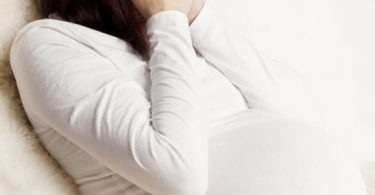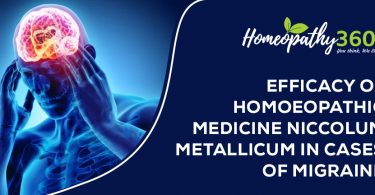
Abstract:
Background: This article gives an idea for all about how to determine the potency for a case by considering various factors. What is the importance of susceptibility in disease and cure?
Methods: Various literatures about susceptibility and potency selection and view of other authors are analysed and combined together to get an idea about determining the potency.
Keywords: Potency, susceptibility, similimum
The study which deals with the selection of dose and potency is called posology. The word posology is derived from the Greek word ‘posos’, which means how much.
Hahnemann, in aphorism 2 described the highest ideal of cure, it should be rapid, gentle, permanent restoration of health, or the removal and annihilation of disease in its whole extent. Elizabeth Wright said, “a well taken case is half cured.” To achieve the remaining half and idealistic cure, the physician should make a prescription of proper similimum in proper potency with proper repetition. For selecting a proper similimum, the physician must constitute a totality of symptoms using the changes and deviations from the former healthy state of mind and body (aphorism 6). Even after selecting a proper similimum, in our daily practice we may face difficulty in determining the potency. A well selected remedy may injure the patient or fail utterly if the potency is wrong.
What is the right potency for this case? How do I choose the right potency? Is there any rule for choosing potency? Should I use the same potency for all the cases?
The physician should not restrict by selecting from one or two potencies. We should always have the idea of using a wide range of any potency indicated in a case without any prejudice. There is no hard and fast rule for choosing a potency in a given case. But there are lots of opinions and suggestions given by the pioneers for how to select the potency.
According to Stuart close, there are five considerations for choosing the right potency:
- The susceptibility of the patient
- The seat of the disease
- The nature and intensity of the disease
- The stage and duration of the disease
- The previous treatment of the disease
The greater the similarity to the remedy, greater the susceptibility and higher potencies are required.
The susceptibility of the patient is the key to selecting the potency of the medicine. Close defined susceptibility is the general quality or capability of the living organism of receiving impressions; the power to react to stimuli.
According to Roberts, susceptibility is primarily the reaction of the organism to external and internal influences.
How does susceptibility influence the disease and cure?
The answer to this question is, Kent says the cause of sickness and the cure of sickness knocks the same door.
Susceptibility is a vacuum which is present in the body. This vacuum attracts the disease, which is on the same plane. The flow of this disease is called an influx. If there is no resistance, there will be no limit to the influx, man will continue to receive disease till death. But if the susceptibility is satisfied with the medicine on the same plane, the vacuum will be filled and the influx ceases.
Figure 1 Illustration of Susceptibility
What are the Types of Potencies Available?
- Mother tinctures
- Decimal scale of potencies
- Centesimal scale of lower potencies
- Centesimal scale of higher potencies
- 50 millesimal scale of potencies
Mother Tinctures (Q): Account for drug affinity for different organs of the body. Remedies which are selected based on pharmacological activity and affinity towards the organ and its pathology can be prescribed with tinctures.
Decimal Scale Potencies (1x, 3x, 6x, 12x): It is usually used in biochemic treatment based on tissue remedies. Any deficiency in the organic salts causes disturbance in the organism. The deficiency can be balanced with biochemic tissue salts in decimal potencies.
Centesimal Scale of Lower Potencies (3ch, 6ch, 12ch, 30ch): It is indicated in old age people, in organic diseases, people with low vitality, and incurable chronic diseases.
Centesimal Scale of Higher Potencies (200ch, 1m, 10m, 50m, Cm): It is indicated in nosodes, bowel nosodes, and polycrest remedies indicated with greater similarity.
50 Millesimal Scale of Potencies (0/1 To 0/20): Dr Hahnemann, in aphorism 246 said, the 50 millesimal potencies can prevent the undesirable reaction, and the medicine can be given daily and for months.
Conclusion: The selection of potency depends upon various factors. The cure may be hampered because of incorrect potency, hence the physician should give importance to potency selection as equal to selection of similimum and make use of all the available potencies.
Table 1: key for Determining the Potency:
| Low potency | Medium potency | High potency | |
| Age | Old age | Children and young age | |
| Sex | Female | Male | |
| Constitution & temperament | PhlegmaticDull, slow to act, sluggish High muscular power individuals | SensitiveNervousSanguine or choleric temperament Intelligent, intellectual personQuick to act and react Eager and impulsive person | |
| Habit | Sleeps littleHabit of using perfumesAddiction to alcohol, tobacco, etc | More of imagination and emotionsLong sleep | |
| Occupation | Lots of physical workOccupation involving constant exposure to chemicals, fumes | Sedentary occupationIntellectual and mental occupation | |
| Nature of disease | Acute diseases of lower vitalityIncurable and fatal diseases | Acute manifestations of chronic diseases | Acute diseases with no structural changes.Chronic diseases with no structural changes.Mental diseases |
| Pathological condition | Power of organism to react is lowGross pathological changes Exhausting chronic disease | Much previous treatment | |
| Symptoms | Common symptoms Pathological symptomsOrgan symptoms | Peculiar and characteristic symptomsMental symptoms | |
| Nature of medicines | Drugs with affinity towards particular organBiochemic salts | NosodesMedicine with deep seat of action | |
References:
1. Hahnemann s. Organon of medicine. 6th edition. B. Jain publishers (p) ltd.; 1849.
2. Close s. The genius of homeopathy. B. Jain publishers (p) ltd.; 1967.
3. Roberts ha. The principles and art of cure by homoeopathy: a modern textbook. New delhi: jain; 1997.
4. James Tyler kent. Lectures on homeopathic philosophy. B. Jain publishers (p) ltd.; 1993.
5. Mathur kn. Principles of prescribing. B. Jain publishers; 2002.
6. Mandal pratim partha, mandal b. A text book of homoeopathic pharmacy. B. Jain publishers; 2001.
Acknowledgment:
- Dr Jacintha Monteiro MD (hom)
Hod – Department of organon & homoeopathic philosophy
Father muller homoeopathic medical college
Deralakatte, mangalore, karnataka
- Dr Skandhan S Kumar HD (hom)
Associate professor
Department of organon & homoeopathic philosophy
Father muller homoeopathic medical college
Deralakatte, mangalore, karnataka





